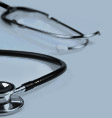 |
 |

|
| What does a medical
transcriptionist need to know?
Medical understanding is critical for the professional medical
transcriptionist. The complex terms used in medicine are unlike the
language used in any other profession.
Medical transcription requires a practical knowledge of medical
language relating to anatomy, physiology, disease processes,
pharmacology, laboratory medicine, and the internal organization of
medical reports. A medical transcriptionist is truly a medical
language specialist who must be aware of standards and requirements
that apply to the health record, as well as the legal significance
of medical transcripts.
Reports of patient care take many forms, including histories and
physical examinations, progress reports, emergency room notes,
consultations, operative reports, discharge summaries, clinic notes,
referral letters, radiology reports, pathology reports, and an array
of documentation spanning more than 60 medical specialties and
frequently dictated by healthcare providers for whom English is a
second language. Thus, the medical transcriptionist, or medical
language specialist, must be well versed in the language of
medicine.
*American Association for Medical Transcription
Toll Free: 800.366.6816
Local: 704.527.8244
Fax: 702.977.3858
Email: tellmemore@unitedtr.com
|
 |
|  |
 |
 |
 |
 |
 |
Medical Transcriptionists
Partners In Medical Communication
Medical transcription has existed since the beginning of
medical care and research. Ancient cave writings attest to the
earliest forms of healthcare documentation. While the medium
changed from metal plates to clay tablets, from hieroglyphs on
temple walls, to papyrus, to parchment, to paper, and most
recently to electronic files, the reasons for maintaining records
have always been the same: to record an individual's health care
and the achievements of medical science. Until the twentieth
century, physicians served both as providers of medical care and
scribes for the medical community.
After 1900, when standardization of medical data became critical
to research, medical stenographers replaced physicians as scribes,
taking their dictation in shorthand. The advent of dictation
equipment made it unnecessary for physician and scribe to work
face-to-face, and the career of medical transcription was born. As
physicians came to rely on the judgment and deductive reasoning of
experienced medical transcriptionists to safeguard the accuracy
and integrity of medical dictation, medical transcription evolved
into a medical language specialty.
In the twenty-first century, some medical transcriptionists are
using speech recognition technology to help them create even more
documents in a shorter time. Medical transcription is one of the
most sophisticated of the allied health professions, creating an
important partnership between healthcare providers and those who
document patient care.
Medical Transcriptionists As Professionals
Since 1978, medical transcriptionists (MTs) have been represented
by a professional organization, the American Association for
Medical Transcription (AAMT), which has developed a competency
profile and a model curriculum for transcription educators, as
well as model job descriptions for transcriptionists and
transcription-related positions. AAMT emphasizes continuing
education for its members, holding an annual conference for
medical transcriptionists, educators, supervisors/managers, and
business owners. Through the efforts of AAMT, medical
transcriptionists have become recognized as healthcare
professionals and experts in the medical language.
While medical transcription is among the most fascinating of the
allied health professions, the general public knows little about
those who practice this skill. It was not until 1999 that the U.S.
Department of Labor assigned a separate job classification
(Standard Occupational Classification #31-9094) so that statistics
could be gathered on medical transcriptionists. Prior to that,
transcriptionists were classified as typists, word processors,
medical secretaries, and dictating machine operators. Through the
efforts of AAMT, visibility and recognition for the profession
have increased, and the terms medical transcriptionist and medical
language specialist have gained widespread acceptance.
Medical transcriptionists work in settings that are usually far
removed from the examining rooms, clinics, and hospital floors
where health care is provided. Patients rarely have the
opportunity to hear about those who transcribe their medical
reports, and medical transcriptionists rarely meet the subjects of
their work.
All healthcare providers rely to some extent on the skills of the
medical transcriptionist to provide written documentation of
health care. The reports produced by medical transcriptionists are
the repository of information concerning medical practice. These
reports function as legal documentation and fulfill requirements
for insurance reimbursement. They also serve as reference for
scientific research.
*American Association for Medical Transcription |
 |
 |
|
|
|
 |
 |
 |
 |
|
 |
|
 |

